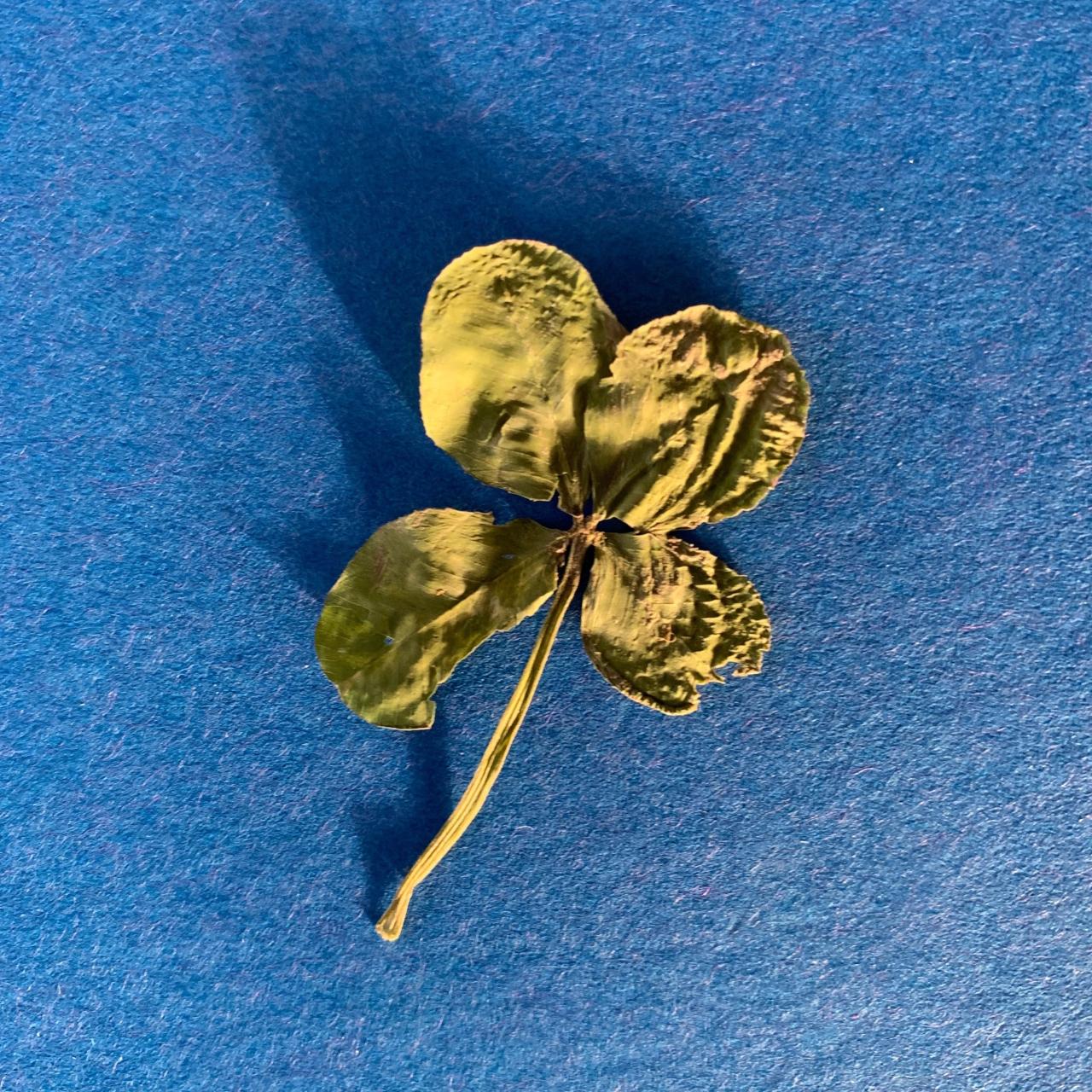How to Find and Cultivate Four Leaf Clovers for Good Fortune has captivated minds for centuries, with tales of luck and folklore woven into its history. This elusive symbol of good fortune has sparked both scientific curiosity and a desire to uncover its secrets.
From understanding the genetic mutation that gives rise to these four-leaf wonders to mastering the art of cultivating your own patch of lucky clovers, this guide delves into the world of these botanical enigmas.
Unraveling the science behind four-leaf clovers reveals a fascinating interplay of genetics and environmental factors. While the odds of finding one are statistically low, understanding the conditions that favor their growth can significantly increase your chances of success. This exploration will not only equip you with the knowledge to find four-leaf clovers but also empower you to cultivate your own lucky patch, ensuring a constant supply of these cherished symbols of good fortune.
The Legend and Folklore of Four-Leaf Clovers: How To Find And Cultivate Four Leaf Clovers For Good Fortune

The four-leaf clover, a rare mutation of the common three-leaf clover, has long been associated with good luck and fortune. Its captivating mystique has woven itself into the fabric of folklore and mythology across cultures, making it a symbol of hope, prosperity, and good fortune.
The Origin and Evolution of the Four-Leaf Clover’s Association with Good Luck
The belief that four-leaf clovers bring good luck is deeply rooted in ancient Celtic folklore. The Celts, who inhabited parts of Europe, believed that the three-leaf clover, or shamrock, represented the Holy Trinity. However, the fourth leaf was seen as a symbol of faith, hope, and love, adding a dimension of good fortune to the already sacred plant.
Cultural Beliefs and Myths Surrounding Four-Leaf Clovers
The association of four-leaf clovers with good luck has transcended geographical and cultural boundaries. Here are some examples:
- In Christian tradition, the four leaves are often associated with the four virtues: faith, hope, love, and luck.
- In Ireland, where the shamrock is a national symbol, finding a four-leaf clover is considered a sign of good fortune and is often associated with St. Patrick’s Day celebrations.
- In some cultures, the four-leaf clover is believed to have protective powers against evil spirits and curses.
Interesting Stories and Anecdotes Related to Finding Four-Leaf Clovers
The allure of the four-leaf clover has inspired numerous stories and anecdotes. One such story tells of a young girl who found a four-leaf clover on her way to school and subsequently won the lottery. While this might be a mere coincidence, it highlights the power of belief and the hope associated with finding this rare plant.Another interesting anecdote involves a couple who found a four-leaf clover on their wedding day.
They believed it was a sign of good fortune and their marriage has been blessed with happiness and prosperity ever since. These stories, while perhaps not scientifically verifiable, demonstrate the enduring power of folklore and the human tendency to ascribe meaning to seemingly insignificant events.
The Science Behind Four-Leaf Clovers
While the folklore surrounding four-leaf clovers paints a picture of good luck and mystical properties, the reality behind their existence lies in the realm of genetics. The four-leaf clover is not a separate species but rather a variation of the common three-leaf clover, brought about by a genetic mutation.
Genetic Mutation
The genetic mutation responsible for the formation of four-leaf clovers is a change in the clover’s DNA, specifically within the genes that control leaf development. This mutation disrupts the normal process of leaf formation, resulting in an extra leaflet. The exact gene or genes involved in this mutation are still being researched, but scientists have identified a few key factors that play a role.
Rarity of Four-Leaf Clovers
The occurrence of four-leaf clovers is relatively rare, with estimates suggesting that only one in 10,000 clovers exhibits this mutation. This rarity can be attributed to a combination of factors:
- The mutation itself is uncommon, meaning it doesn’t occur frequently in clover populations.
- Environmental factors, such as soil conditions and exposure to sunlight, can also influence the likelihood of a mutation occurring.
- The four-leaf clover trait is recessive, meaning it only manifests if an individual clover inherits two copies of the mutated gene, one from each parent.
Genetic Makeup of Four-Leaf Clovers
While a standard three-leaf clover possesses a set of genes that code for three leaflets, a four-leaf clover carries a modified set of genes. This modified set includes the mutation that disrupts the normal leaf development process, leading to the formation of an extra leaflet.
The genetic makeup of a four-leaf clover is a testament to the intricate workings of nature, showcasing how a single mutation can create a unique and fascinating variation.
Finding Four-Leaf Clovers
The thrill of discovering a four-leaf clover is undeniable. It’s a symbol of luck, a reminder of nature’s wonders, and a testament to the power of persistence. To find these elusive treasures, you need to know where to look, when to search, and how to identify potential patches.
Finding the Right Location
The key to finding four-leaf clovers is understanding their preferred habitat. These lucky charms thrive in areas with ample sunlight, fertile soil, and consistent moisture. Here are some prime locations to start your search:
- Lawns and Parks:These are common spots where clover readily grows. Look for areas with well-maintained lawns, especially those with a mix of clover and grass.
- Fields and Meadows:Wild clover thrives in these open spaces. Look for areas with undisturbed vegetation and a diverse mix of wildflowers.
- Roadsides and Ditches:Clover often grows along roadsides and in ditches, where soil is disturbed and nutrients are plentiful.
- Gardens and Yards:Clover can be found in gardens and yards, particularly in areas with loose, well-drained soil.
Optimizing Search Timing, How to Find and Cultivate Four Leaf Clovers for Good Fortune
The best time to search for four-leaf clovers is during the spring and summer months when the clover is actively growing. The leaves are lush and vibrant, making it easier to spot the rare four-leaf clover.
Identifying Potential Patches
While four-leaf clovers can appear anywhere, certain indicators can help you identify promising areas.
While searching for four-leaf clovers, you might stumble upon another delightful plant – the columbine. These delicate blooms, with their intricate, spurred petals, add a touch of whimsy to any garden. For tips on cultivating these beautiful plants, check out The Essential Tips for Growing Beautiful Columbine Plants.
After successfully growing your columbines, you can then focus your attention back to the hunt for those lucky four-leaf clovers, knowing that your garden is already filled with beauty and charm.
- Abundant Clover Growth:Look for areas with a high concentration of clover plants. This indicates a healthy and thriving clover population, increasing the chances of finding a four-leaf clover.
- Diverse Clover Varieties:Clover species come in various shapes and sizes. Patches with a mix of clover varieties often have a higher likelihood of producing four-leaf clovers.
- Uncommon Clover Traits:Look for clover plants with unusual features, such as unusually large leaves or a distinct color variation. These plants may have a higher probability of producing four-leaf clovers.
Best Clover Varieties for Four-Leaf Clover Hunting
Different clover varieties have varying probabilities of producing four-leaf clovers. Here’s a table comparing some of the most popular clover varieties:
Clover Variety |
Common Name |
Four-Leaf Clover Probability |
Characteristics |
|---|---|---|---|
Trifolium repens |
White Clover |
1 in 10,000 |
Small, white flowers; low-growing; spreads rapidly |
Trifolium pratense |
Red Clover |
1 in 10,000 |
Large, pink or purple flowers; taller than white clover; attracts pollinators |
Trifolium hybridum |
Alsike Clover |
1 in 10,000 |
Small, pink or white flowers; intermediate size between white and red clover |
“Remember, the key to finding four-leaf clovers is persistence and a keen eye for detail. Don’t be discouraged if you don’t find one immediately. Keep searching, and you might just stumble upon your own lucky charm.”
Cultivating Four-Leaf Clovers

While finding a four-leaf clover is a matter of chance, cultivating a patch dedicated to increasing your odds of finding them is a rewarding endeavor. By understanding the ideal conditions for clover growth and employing specific techniques, you can create a thriving clover patch where four-leaf clovers are more likely to appear.
Choosing the Right Location
Selecting a suitable location is crucial for successful clover cultivation. Consider these factors:
- Sunlight:Clovers thrive in full sun to partial shade. Aim for a location that receives at least 4-6 hours of direct sunlight daily.
- Soil Type:Clovers prefer well-drained soil that is slightly acidic to neutral. A pH range of 6.0-7.0 is ideal.
- Moisture:Clovers require consistent moisture but are also susceptible to waterlogging. Ensure the soil drains well and avoid overwatering.
Preparing the Soil
Before planting, prepare the soil to create an optimal environment for clover growth:
- Remove Existing Vegetation:Clear any existing weeds or grass from the chosen area. This will prevent competition for resources.
- Loosen the Soil:Till or dig the soil to a depth of 6-8 inches. This improves drainage and aeration.
- Amend the Soil:If necessary, amend the soil with compost or other organic matter to improve its structure and nutrient content.
Planting Clover Seeds
Planting clover seeds is a straightforward process. Follow these steps:
- Choose Clover Seeds:Opt for a mix of white clover (Trifolium repens) and red clover (Trifolium pratense). These varieties are commonly found and produce four-leaf clovers more frequently.
- Scatter Seeds:Broadcast the seeds evenly over the prepared soil. Aim for a density of 2-3 pounds per 1,000 square feet.
- Cover Seeds:Lightly rake the seeds into the soil, ensuring they are covered with about 1/4 inch of soil.
- Water Thoroughly:After planting, water the seeds thoroughly to encourage germination.
Maintaining Your Clover Patch
Once your clover patch is established, it requires regular maintenance to ensure optimal growth and four-leaf clover production:
- Watering:Keep the soil consistently moist, especially during the first few weeks after planting. However, avoid overwatering, as this can lead to root rot.
- Weeding:Regularly remove any weeds that emerge in your clover patch. This will prevent them from competing with the clover plants for nutrients and sunlight.
- Fertilizing:Clovers are nitrogen-fixing plants, meaning they can obtain nitrogen from the air. However, additional fertilization can enhance growth. Apply a balanced fertilizer, such as 10-10-10, once or twice a year, especially if the soil is poor in nutrients.
- Mowing:To maintain a healthy and dense clover patch, mow it regularly to a height of 2-3 inches. This encourages new growth and prevents the clover from becoming too tall and leggy.
Beyond Good Luck
While four-leaf clovers are often associated with good luck, their uses extend beyond mere superstition. These unique plants have a fascinating history, and their symbolic meaning and potential benefits have intrigued people for centuries.
Medicinal Uses
Four-leaf clovers have been traditionally used in folk medicine for various ailments. Their leaves are believed to possess several medicinal properties.
“Clover has been used in folk medicine for centuries, but there is no scientific evidence to support its effectiveness for any particular ailment.”
While searching for four-leaf clovers, remember that good fortune can also be found in the beauty of nature. For a truly stunning culinary experience, consider incorporating blue-flowered plants into your salads, like those discussed in How to Grow and Use Blue Flowered Plants for a Stunning Salad.
Just as the clover symbolizes luck, these vibrant flowers bring a touch of elegance and flavor to your meals, enhancing your well-being and sense of abundance.
- Anti-inflammatory properties: Some studies suggest that clover extracts may have anti-inflammatory properties, which could help reduce swelling and pain.
- Antioxidant properties: Clover leaves are rich in antioxidants, which may help protect cells from damage caused by free radicals.
- Diuretic properties: Clover is believed to have diuretic properties, which could help increase urine production and flush out toxins from the body.
It is important to note that these medicinal benefits are largely anecdotal and have not been scientifically proven. It is crucial to consult with a healthcare professional before using clover for medicinal purposes.
Crafts and Decorations
Four-leaf clovers can be incorporated into various crafts and decorations, adding a touch of luck and charm.
- Pressed clover crafts: Dried four-leaf clovers can be pressed and used in crafts like bookmarks, greeting cards, and jewelry.
- Resin crafts: Four-leaf clovers can be embedded in resin to create unique and beautiful ornaments, coasters, and paperweights.
- Floral arrangements: Fresh four-leaf clovers can be incorporated into floral arrangements, adding a touch of luck and greenery.
Final Review
The search for four-leaf clovers is more than just a hunt for good luck; it’s an opportunity to connect with nature, embrace the mysteries of genetics, and cultivate a sense of wonder. Whether you’re seeking to find a lucky charm or simply enjoy the beauty of these unique plants, the journey to discovering and cultivating four-leaf clovers is sure to be both rewarding and enlightening.
So, equip yourself with knowledge, embrace the thrill of the search, and let the hunt for these lucky clovers lead you to a world of botanical discovery and good fortune.
FAQ Explained
Can I find four-leaf clovers year-round?
While clovers grow throughout the year, the best time to find four-leaf clovers is during the spring and summer months when they are actively growing.
Is there a specific type of clover that’s better for finding four-leaf clovers?
White clover (Trifolium repens) is known to have a higher frequency of four-leaf mutations. However, any clover variety can produce four-leaf clovers, though the odds may vary.
How do I preserve a four-leaf clover once I find it?
You can press it between two sheets of paper with a heavy object on top or laminate it for a longer-lasting preservation.
What are the medicinal benefits of four-leaf clovers?
While four-leaf clovers are not scientifically proven to have medicinal benefits, they are often associated with traditional folk remedies for various ailments. It’s important to consult with a healthcare professional before using any plant for medicinal purposes.
